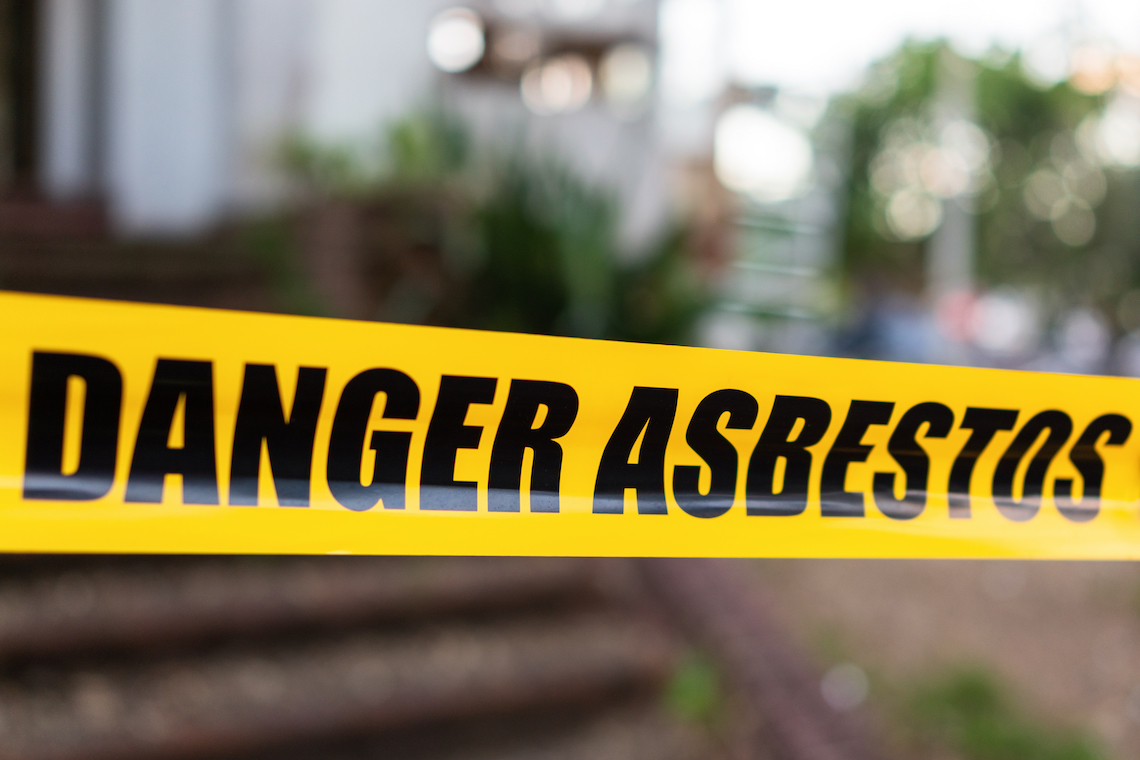Late last year my mother died of mesothelioma, inhaling the asbestos fibres from cutting fibro sheeting in the early 50s when she helped to build her family’s ‘new’ fibro workers cottage at Redland Bay. She then lived in the cottage, with the cut fibro ends exposed and ‘unsealed’ for a further 8 years. Her breathing wasn’t noticeably impacted until her 60s and obviously there was no treatment. In her last 12 months, the results from inhaling the fibres some 70 years earlier were debilitating.
And while asbestos occurs naturally, it is has been a little eye-opening to see that it has been used by people since day dot:
- The Egyptian pharaohs were wrapped in asbestos cloth to protect their bodies from deterioration.
- Around 400 years BC, historical texts have the Greeks using asbestos shrouds to wrap their dead before their bodies were tossed onto the funeral pyre, to prevent their ashes from being mixed with those of the fire itself.
- King Charlemagne of France had a tablecloth made of asbestos to prevent it from burning during the accidental fires that frequently occurred during feasts and celebrations.
- Knights of the First Crusade used a catapult to fling flaming bags of pitch and tar wrapped in asbestos bags over city walls during their sieges.
- In 1280, Marco Polo wrote about clothing made by the Mongolians from a “fabric which would not burn” and he visited an asbestos mine in China.
Equally the diseases stemming from the mining and processing of asbestos, and the devastating outcome, have been identified for thousands of years. The Roman historian Pliny the Elder (who lived between 61 & 112AD), wrote of a “disease of slaves,” inflicting the slave workforce involved in the mining and processing of asbestos. He described the use of a thin membrane from the bladder of a goat or lamb used by the slave miners as an early respirator in an attempt to protect them from inhaling the harmful fibres.
Flash forward a thousand or so years to 1897 when an Austrian doctor attributed pulmonary troubles in one of his patients to the inhalation of asbestos dust, and an 1898 report regarding the asbestos manufacturing process in England which cited “widespread damage and injury of the lungs, due to the dusty surrounding of the asbestos mill.” In 1906, the first documented death of an asbestos worker from pulmonary failure was recorded in London, with the autopsy of the 33-year-old victim revealing large amounts of asbestos fibres in his lungs. Reports of worker deaths from “fibrosis” in asbestos plants in Italy and France echoed studies from the U.S. and suggested that asbestos workers were dying unnaturally young.
Despite constant health warnings, asbestos mining and manufacturing boomed throughout the 20th century due primarily to the marketing and promotion of this cost-effective ‘miracle-product’ with a thousand uses. Global demand increased after World War II as economies and countries struggled to rebuild using this cheap mass-produced ‘construction material’.
In Australia, asbestos cement materials were first manufactured in the 1920s and were commonly used in the manufacture of building materials. Asbestos was a favourable material for our post-war construction boom. Fibro sheets were durable, heat resistant, fireproof, cheap, and easily accessible. Back then it was a government approved construction product used on military bases, railways, government and council buildings throughout Australia.
Surprisingly, even with all the health warnings, the world demand for asbestos peaked in 1977 with 4.8 million metric tons per year produced (https://www.asbestos.com/asbestos/history/) … and so here we are, over 30 years on from the world’s peak demand, and there have been enormous numbers of deaths internationally and within Australia attributed to the asbestos fibres. But what is frustrating is that there are still instances today where Asbestos Containing Materials (ACM) is being poorly managed in workplaces.
Yes, there are thousands of sites and workplaces with ACM legacy issues that need to be managed, but over the last 12 months I have seen examples of suspected asbestos tagged with the industry standard stickers but not maintained; others tagged with faded post-it notes; and others not identified at all. And from what we saw when the new Queensland Government Executive Building was constructed in 2016, ACM is still being manufactured in China and other countries, and there is still the potential for it to be imported from overseas, so this needs to be monitored as well.
Australia has policies in place that say ‘enough is enough’ in relation to Asbestos, but this often doesn’t translate to prioritising and managing the issue at site-level. So, while there is ACM being poorly managed in workplaces, and the chance that it may be imported from overseas, there is also the likelihood that the next generation will be exposed and succumb years later to this debilitating illness.
David Muchow, Managing Consultant, QRMC
Please contact QRMC for more information.









